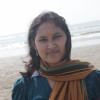Chaitra Sankranti celebration- then and now

The busy urban living does not allow us to perform many of our rituals, festivities and practices the way our families observed them over the years. One such ritual is Chaitra Sangkranti celebration.
Chaitra Sankranti is being observed for hundreds of years marking the last day of the Bangla year.
Chaitra is the last month of Bosonto Kal (Spring Season) in Bangla calendar, a form of solar calendar followed by rural people since hundreds of years. It was later officially introduced by Mughal Emperor Akbar in place of lunar calendar to solve the problem with taxation of the subjects. The Bangla New Year celebration on Pahela Baishakh began then.
Today, Chaitra 30, 1422 (Bangla year) is the last day of the year.
Usually the day's celebration is more colourful than Pahela Baishakh celebration in rural areas.
Rural people organise different festivals, especially fairs, to celebrate the end of the year and the beginning of another.
'Charak puja' is one of the major events of the festival.
"The celebration was different 30 years back when we were children. We used to feel a pleasure when we performed a puja," Geetika Mazumder, a housewife living in Dhaka said while sharing her experiences about Chaitra Sangkranti rituals.

"We used to have different foods such as chhatu, batasa, sweets, fried rice, khoi, murki, muri, neem pata and 20 types of shak (leafy vegetables)," she added.
In the urban areas mainly in Dhaka, there are many reasons for not performing the traditional Chaitra Sangkranti celebration. The busy lifestyle in the urbanity and the confinement inside cubicle-like concrete homes deprive us the scope to immerse ourselves with these festive moods, and over the years of being entangled in this, the urban people have become lesser and lesser interested in these celebrations.
Usually rural people arranged festivals to celebrate the end of one year and the beginning of another. "Charak puja" is one of the major events of the festival.
Let's talk about the food eaten during Chaitra Sankranti celebration, which is more available in the rural areas than in the urbanity.
In the morning of the Chaitra Sangkranti day, a prayer is made by offering the summer fruits -- water melon, pani fol, sosha, dates, all of which give much respite in the hot summer, said Sondhya Rani Mohanta, another housewife living in Dhaka.
Chhatu is a special dish made in the morning of that day. It is eaten with milk and banana. It is a very delicious and a healthy food item. People in some rural areas also eat neem tree leaves, she added.

In many districts outside Dhaka, "Charak puja" and "Gajon Mela" are performed during the day long celebration of Chaitra Sankranti.
On the eve of the day, devotees demonstrate their ability to endure extreme pain and discomfort by piercing their bodies with sharp objects. Some devotees also believe that the ritualistic Kanta Bhanga-Hajrapita on the Chaitra Sankranti eve has the effect of exorcism that would free them from the evil forces in the coming year.
With painted bodies, wearing long hair, and carrying tridents and other sharp objects, they give a horrifying and hypnotic performance by climbing on top of date plum trees and smashing thorns of the trees with their bare toes.
On this day, local fair known as 'Chaitra Sankranti Mela', which is the most colourful event of this time, is organized in many places across the rural parts of Bangladesh. People from all walks of lives participate in the fair amid the festive mood. These fairs begin on Chaitra Shankranti eve and continue for a week on the occasion of Bangla New Year.
Local artisans sell different types of traditional handicrafts and other products including hand-made toys. An assortment of food and sweets are also sold there. Jatra pala, a traditional cultural event, is performed in the fairs which draws a major crowd.
The nature of the celebration varies among Bangalis and other ethnic minorities, also known as indigenous people.
Chaitra Sankranti is believed to be a cultural practice among the Bangalis. But day by day, it is becoming centered among Hindu communities as they are trying to preserve the cultural and religious rituals.
Anindya J Ayan contributed to the report

 For all latest news, follow The Daily Star's Google News channel.
For all latest news, follow The Daily Star's Google News channel. 








Comments